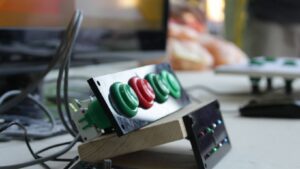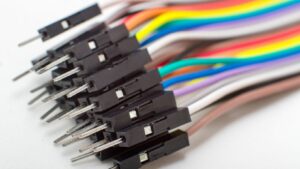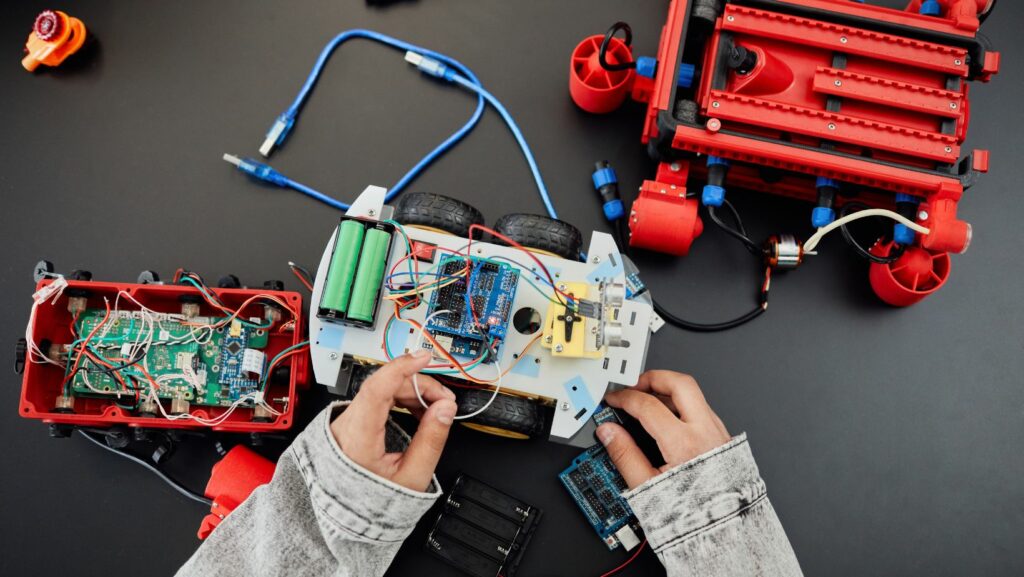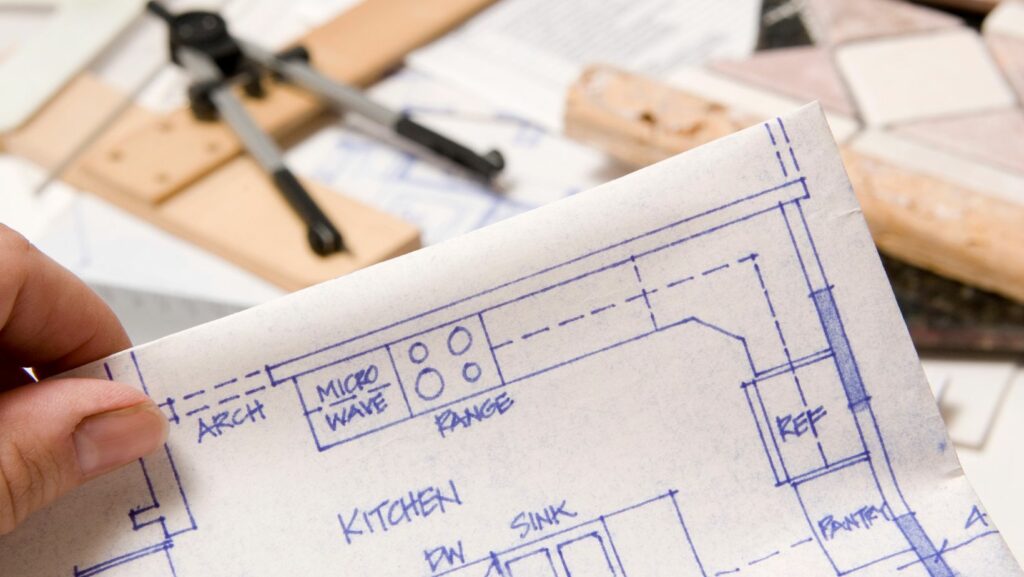DIY Electronic Projects
- Diverse Project Spectrum: DIY electronic projects range from simple circuits for beginners to advanced robotics and IoT systems for experienced makers, appealing to various skill levels and interests.
- Essential Skills Development: Engaging in these projects enhances technical skills, problem-solving abilities, and critical thinking, fostering personal growth and sparking innovation.
- Key Tools and Materials: Having the right tools, such as a soldering iron, multimeter, and breadboard, is crucial for successfully building and testing electronic projects.
- Safety First: Adhering to safety tips, such as wearing protective gear and working in a well-ventilated space, is essential to prevent accidents and ensure a smooth building process.
- Resource Availability: Numerous online platforms, workshops, and maker spaces provide valuable resources, tutorials, and community support, making it easier to start and complete projects.
- Creative Exploration: DIY electronic projects encourage creativity, allowing individuals to design and create unique gadgets and systems tailored to their personal interests and needs.
In a world where technology reigns supreme, DIY electronic projects offer a thrilling way to blend creativity with innovation. Whether you’re a seasoned tech enthusiast or a curious beginner, these projects empower individuals to craft unique gadgets and systems right at home. From simple circuits to complex robotics, the possibilities are endless.
Overview of DIY Electronic Projects
DIY electronic projects span a vast spectrum, catering to various interests and expertise levels. Basic projects often involve simple circuits or LED displays, providing a solid foundation for beginners. Intermediate projects may delve into microcontrollers, such as Arduino or Raspberry Pi, enabling users to create interactive devices. Advanced projects can incorporate robotics, home automation, and IoT systems, pushing the boundaries of creativity and technical skills.
Many resources support individuals in their DIY endeavors. Online platforms offer tutorials, schematics, and forums fostering collaboration among enthusiasts. Workshops and maker spaces encourage hands-on learning, allowing participants to experiment with components and tools.
Project ideas include:
- LED Display Projects: Create colorful displays using LEDs for artistic or informative purposes.
- Sensor-Integrated Projects: Develop systems that respond to environmental changes, such as temperature sensors for climate control.
- Robotics Projects: Build robots that can perform specific tasks, enhancing problem-solving skills.
- Home Automation Projects: Automate household functions like lighting and security through programmable systems.
Engaging in DIY electronic projects not only enhances technical skills but also encourages problem-solving and critical thinking. The thrill of building something from scratch inspires both personal growth and potential innovation.
Popular DIY Electronic Projects
DIY electronic projects cater to various skill levels, offering an array of ideas for both beginners and experienced makers. Exploring these projects allows individuals to develop technical skills while enjoying the creative process.
Project Ideas for Beginners
- LED Display Projects: Create simple LED displays using basic circuit components. Beginners can start with a matrix of LEDs controlled by a microcontroller.
- Simple Circuit Building: Construct basic circuits with a battery, switches, and light bulbs. This foundational project teaches essential concepts of electricity and circuit design.
- Temperature Sensors: Build a simple temperature sensor using an LM35 or DS18B20 sensor. This project introduces concepts of data collection and basic programming.
- Sound-Activated LED: Assemble a sound-activated LED circuit that lights up in response to sound. This project reinforces understanding of sound sensors and circuitry.
- Home Automation Systems: Develop a complete home automation system using Raspberry Pi or Arduino. Control lights, thermostats, and security systems remotely, enhancing convenience and energy efficiency.
- Robotics Projects: Construct robots using programmable microcontrollers for tasks like line-following or obstacle avoidance. These projects challenge creators to apply complex programming and mechanical skills.
- IoT Devices: Create Internet of Things (IoT) devices to monitor and control aspects of daily life. Examples include smart gardening systems that track soil moisture and send alerts via mobile applications.
- Wearable Technology: Design wearable devices incorporating sensors for fitness tracking or health monitoring. This project integrates various skills, including software development and textiles.
Essential Tools and Materials
Having the right tools and materials is crucial for successful DIY electronic projects. These essentials streamline the building process, enhance creativity, and minimize frustration.
Must-Have Tools for DIY Electronics
- Soldering Iron: A soldering iron is necessary for connecting components reliably. It allows for the creation of durable circuits that withstand repeated use.
- Multimeter: A multimeter is essential for measuring voltage, current, and resistance. It aids in troubleshooting and verifying circuit functionality.
- Wire Strippers: Wire strippers make it easy to remove insulation from electrical wires. They ensure clean connections and optimize conductivity.
- Breadboard: A breadboard facilitates prototyping without soldering. It allows users to experiment with circuit designs quickly.
- Power Supply: A regulated power supply is vital for providing the correct voltage and current to projects. It ensures components receive adequate power.
- Tweezers: Tweezers assist in handling small components. They provide precision when placing and connecting delicate parts.
- Heat Shrink Tubing: Heat shrink tubing protects solder joints and prevents short circuits. It insulates wires effectively.
- Resistors: Resistors control current flow within circuits. They come in various values and are fundamental for creating functional electronic designs.
- Capacitors: Capacitors store and release electric charge. They play a role in smoothing out fluctuations in power supply and affect timing in circuits.
- Diodes: Diodes allow current to flow in one direction only. They are crucial for protecting circuits from reverse polarity.
- Transistors: Transistors act as switches or amplifiers in circuits. They enable more complex functionalities, such as signal processing.
- Microcontrollers: Microcontrollers like Arduino or Raspberry Pi are integral for programming tasks. They provide the foundation for interactive and intelligent projects.
- LEDs: Light Emitting Diodes (LEDs) serve as indicators and visual displays. They are energy-efficient and available in numerous colors.
- Sensors: Sensors detect environmental changes, such as temperature or light. They add interactivity and functionality to projects.
Safety Tips for DIY Electronic Projects
Safety is paramount when engaging in DIY electronic projects. Following these tips helps prevent accidents and ensures a smooth building process.
- Wear Protective Gear: Use safety glasses to protect eyes from flying debris. Wear gloves when handling sharp components or solder.
- Work in a Well-Ventilated Area: Ensure adequate airflow to avoid inhaling harmful fumes from solder and other materials.
- Disconnect Power Sources: Always unplug devices before working on them. Check components for residual charge, especially capacitors.
- Understand Component Ratings: Verify the voltage and current ratings of components. Using components beyond their ratings can cause failures or fires.

- Use Tools Safely: Employ tools according to manufacturer instructions. Handle soldering irons and other sharp instruments with care.
- Keep a Fire Extinguisher Nearby: Maintain access to a fire extinguisher when working with electrical components to address any fires promptly.
- Avoid Water Exposure: Keep liquids away from work areas to prevent electrical shorts and decrease shock hazards.
- Organize Your Workspace: Maintain a clutter-free workspace to avoid tripping hazards and misplaced tools or components.
- Read Datasheets: Consult datasheets for components before use. This contains crucial safety information and proper usage guidelines.
- Ask for Help When Unsure: Seek assistance from experienced individuals if uncertain about any aspect of the project. Collaboration fosters a safer learning environment.
Implementing these safety tips ensures a safer and more enjoyable experience while exploring the world of DIY electronics.
Creativity and Innovation
Exploring DIY electronic projects opens up a world of creativity and innovation. Whether one is a beginner or an experienced maker there’s always something new to learn and create. The diverse range of project ideas ensures that everyone can find something that sparks their interest.
With the right tools and materials anyone can transform their ideas into reality. Safety should always be a priority to ensure a rewarding experience. By engaging in these projects individuals not only enhance their technical skills but also foster a spirit of problem-solving and critical thinking.
Embracing the journey of DIY electronics can lead to personal growth and inspire future innovations. So grab those tools and start creating. The possibilities are endless.
“



